Cultural Tourism
Cultural and Tourism Industry Park Construction Project of Jilin City
1. Introduction to the Project
1.1 Project background
1.1.1 Product introduction
The cultural and tourism industry is a comprehensive industry with a wide scope and a long industrial chain. In addition to directly bringing economic income to local scenic spots, it also has strong industrial correlation. It can promote the development of multiple industries such as transportation, catering, accommodation, retail, cultural and entertainment, and can also integrate and link with other industries such as sports, technology, commerce, and agriculture. The cultural tourism industry park is an area that serves tourists, with cultural sightseeing and recreational experience as its core attributes. It has various functions such as cultural leisure and creativity, tourism sightseeing and experience, vacation and recuperation, exhibition and science education, etc.
The project relies on the tourism resources of Jilin City to construct a cultural and tourism complex in the Baiye Auto Parts Center of Chuanying Economic Development Zone, integrating a cultural and tourism exhibition and sales center, a folk experience area of Northeast China, a intangible cultural heritage food reception center of Northeast China, and an indoor study center.
1.1.2 Market prospect
1. Development status of the cultural tourism industry
In the context of changes in the international economic situation and globalization, the sustained rapid development of the tourism industry and the increasingly active cross-cultural communication have made the deep integration of culture and tourism more feasible and urgent. Cultural tourism has become a hot topic of academic concern, and global cultural tourism resources are abundant. There are 1154 World Heritage sites that have passed the World Heritage assessment criteria, located in 167 member countries. Among the 1154 World Heritage sites, 897 are cultural heritage sites, 218 are natural heritage sites, and 39 are dual cultural and natural heritage sites. The global integration of cultural and tourism industries has gone through decades, and countries such as the UK, US, Japan, South Korea, and France have achieved great success. This is inseparable from the efforts of each country in the content, form, and technology of the cultural and tourism industry. According to the United Nations World Tourism Organization, cultural tourism (tourism centered on cultural attractions and products) is one of the fastest-growing parts of the tourism industry, accounting for about 40% of all global tourism. The United Nations World Tourism Organization has released the World Tourism Barometer, which states that in the first nine months of 2024, approximately 1.1 billion tourists worldwide traveled abroad, and tourism has recovered to 98% of the level before the pandemic.
From the perspective of the domestic market, the gross domestic product for the whole year of 2023 will be 1.260582 trillion yuan, an increase of 4.6% compared to the previous year at constant prices. By industry, the added value of the tertiary industry was 68823.8 billion yuan, an increase of 7.1%. In 2023, the per capita disposable income of both urban and rural residents in China steadily increased, with a significant increase in rural residents’ income and an actual growth rate of 7.6%; in the composition of consumer expenditure, there has been a significant increase in food, tobacco, alcohol, education, culture, and entertainment, and consumer demand has shown diversification.
Figure 1 Per Capita Disposable Income of Countrywide, Urban and Rural Residents in China from 2022 to 2023
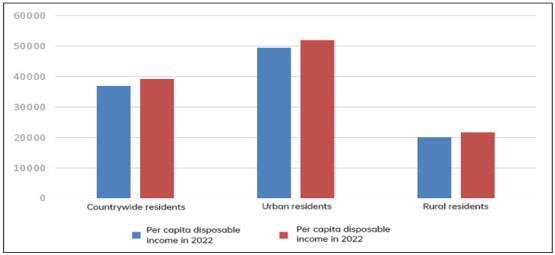
Figure 2 Per Capita Consumption Expenditure and Compositions of Residents in 2023
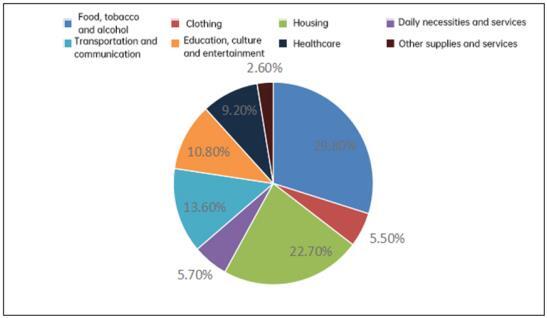
Cultural tourism, as an emerging form of the tourism industry, attracts numerous tourists by exploring and inheriting local historical and cultural resources. However, in recent years, due to factors such as stricter policy supervision, the registration volume of domestic tourism related enterprises has shown a fluctuating trend since 2016, increasing from 214700 in 2016 to 314900 in 2019, and then showing a downward trend, dropping to 255100 in 2022. At the same time, due to factors such as the repeated epidemic, the market size of China’s cultural tourism industry in 2022 decreased to 865 billion yuan, a year-on-year decrease of 28.01%. However, in the long run, in the post-pandemic era, China’s cultural tourism will recover strongly. According to data from the Ministry of Culture and Tourism, the registration volume of tourism-related enterprises in 2023 was 362900, a year-on-year increase of 42.28%; in the Mid-Autumn Festival and National Day holidays in 2023, the cultural and tourism industry recovered strongly. The Mid-Autumn Festival and National Day holidays last eight days, and 826 million domestic tourists traveled, an increase of 71.3% year on year in comparable terms, and 4.1% in comparable terms compared with 2019; it realized the domestic tourism revenue of 753.43 billion yuan, a year-on-year increase of 129.5% on a comparable basis and a 1.5% increase on a comparable basis compared to 2019. In 2024, the number of tourists traveling during the Spring Festival was 474 million, and the tourism revenue was 632.687 billion yuan, which recovered to 119% and 107.7% of the same period in 2019, respectively. It has fully recovered and exceeded the level of the same period before the pandemic.
Figure 3 The Number of People Traveling during Major Holidays in China from 2023 to 2024
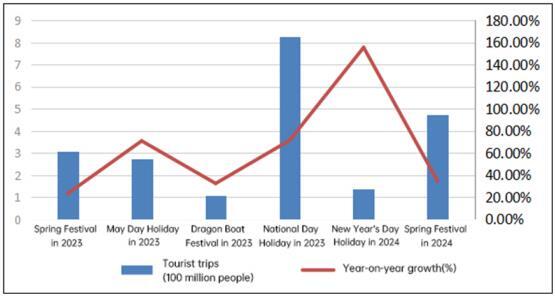
Figure 4 Income from Major Holidays Travels in China in 2023-2024
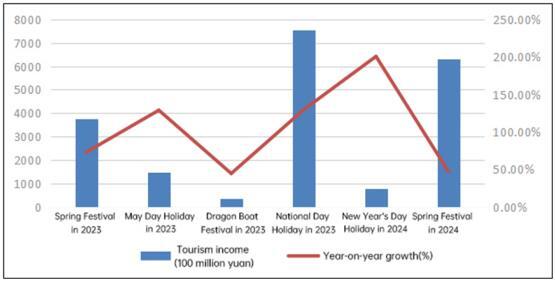
2. Competitive landscape of the cultural tourism industry
There are many participants in China’s cultural tourism industry, including travel agencies, scenic area managers, cultural and creative enterprises, technology companies, online travel platforms, etc. Travel agencies play an important role in the cultural tourism market. They organize and sell cultural tourism packages, provide tour guide services, handle reservations and itinerary arrangements. Some large travel agencies such as Ctrip and Tujia also have online platforms to provide online services for tourists; the management of cultural tourism scenic spots is fiercely competitive, as they compete to provide experiences and services that attract tourists, including cultural festivals, exhibitions, performances, and cultural experiences; cultural and creative enterprises such as cultural and artistic institutions, handicraft manufacturers, and artists play an important role in the cultural tourism industry; technology companies are playing an increasingly important role in cultural tourism, providing virtual travel experiences, online guides, mobile applications, and digital tools to help tourists better understand cultural attractions and activities; the hotel and catering industry provides accommodation and catering services for tourists, and some hotels also offer cultural themed accommodation experiences, such as traditional courtyard hotels or hotels renovated from historical buildings; online travel platforms such as Ctrip, Qunar, Meituan, etc. play an important role in the cultural tourism market, providing channels for tourists to book and purchase cultural tourism products. The fierce competition among participants in innovation and improving service quality, coupled with the diversity and constantly changing consumer demands, has also driven the development and competition of the market.
3. Development trends of the cultural tourism industry
China has unique and rich cultural heritage in the world, including ancient architecture, historical sites, traditional crafts, opera, folk music, etc. These cultural resources attract domestic and foreign tourists and provide rich materials for cultural tourism. In the future, the market prospect of China’s cultural tourism industry is very broad and has considerable development potential. In addition, with the continuous advancement of digital technology, cultural tourism will continue to be digitized, providing tourists with virtual tourism, online guidance, cultural applications, and virtual reality experiences.
1.1.3 Advantageous conditions of project construction
(1) Policy advantages
The Central Economic Work Conference 2024 listed “vigorously boosting consumption, improving investment efficiency, and expanding domestic demand in all aspects” as the top priority of the nine major tasks for 2025, and clearly put forward specific requirements such as “innovating diversified consumption scenarios, expanding service consumption, and promoting the development of cultural tourism industry”.
The Classification of Quality Levels for Tourist Attractions (GB/T17775-2024) has added the content on “integration of culture and tourism” and “smart tourism”. The integration of culture and tourism has established a standard content system consisting of three parts: cultural themes, cultural utilization, and cultural dissemination; smart tourism has established a standard content system consisting of three parts: smart services, smart management, and smart marketing.
The Domestic Tourism Promotion Plan (2023-2025) proposes to strengthen domestic tourism promotion, enrich high-quality tourism supply, improve tourism consumption experience, enhance public service efficiency, support the transformation and upgrading of business entities, deepen reforms in key areas, improve the quality of tourism market services, and strengthen comprehensive market supervision.
The Measures for Unleashing the Potential of Tourism Consumption and Promoting High-quality Development of Tourism proposes to promote the deep integration of culture and tourism, guide the healthy development of various formats such as drama festivals, music festivals, art festivals, animation festivals, concerts, art exhibitions, and cultural tourism exhibitions, and enrich formats such as “music+tourism”, “performance+tourism”, “exhibition+tourism”, and “event+tourism”.
The Action Plan for the Integration and Development of Virtual Reality and Industry Applications (2022-2026) proposes to have achieved breakthroughs in key virtual reality application areas such as industrial production, cultural tourism, integrated media, education and training, sports and health, commercial creativity, and smart cities by 2026. Carry out 10 types of virtual audio-visual production application demonstrations, create 10 “virtual reality+” integrated application leading cities and parks, and form at least 20 characteristic application scenarios and 100 integrated application pioneer cases.
The National Tourism and Leisure Development Outline (2022-2030) proposes 10 key tasks, including cultivating modern leisure concepts, ensuring tourism and leisure time, optimizing tourism and leisure spaces, enriching the supply of high-quality products, improving tourism and leisure facilities, developing modern leisure formats, enhancing tourism and leisure experiences, promoting product innovation and upgrading, continuously deepening industry reforms, and continuously strengthening international exchanges.
The 14th Five-Year Plan for the Development of Tourism Industry proposes that by 2035, the characteristics of diversified tourism demand, high-quality supply, regional coordination, and shared achievements will have become more apparent. High-quality tourism supply represented by national cultural parks, world-class tourist attractions and resorts, national tourism and leisure cities and streets, demonstration areas for integrated development of red tourism, and key rural tourism villages and towns will be more abundant, and the comprehensive functions of the tourism industry will be fully utilized.
The 14th Five-Year Plan for the Development of Culture and Tourism in Jilin City proposes the deep integration of cultural and tourism industries, and the driving role continues to emerge. By 2025, there will have been a positive interaction between “tourism+” and “+tourism”, and the functions of industry linkage will continue to be demonstrated. The cultural and tourism industries will be deeply integrated with modern agriculture, sports, health, agriculture, industry, education, and other fields. A comprehensive cultural and tourism “1+7” industry cluster system with ice and snow tourism as its characteristic will be basically formed. Traditional and emerging industries will be developed simultaneously, traditional and new elements will be integrated and developed, and the proportion of innovative and integrated cultural and tourism products will continue to increase. The number of leading cultural and tourism enterprises has significantly increased, and by 2025, the number of cultural and tourism enterprises with revenue exceeding 100 million yuan will have reached 20. The innovation capability of enterprises has been significantly enhanced, and the innovation system continues to be improved.
(2) Resource advantages
Land resources: Jilin City covers an area of 27120 square kilometers, including 806 square kilometers in Changyi District, 688 square kilometers in Chuanying District, 1110 square kilometers in Longtan District, 1032 square kilometers in Fengman District, 2624 square kilometers in Yongji County, 4600 square kilometers in Shulan City, 3960 square kilometers in Panshi City, 6050 square kilometers in Jiaohe City, and 6250 square kilometers in Huadian City.
Tourism resources: Jilin City is renowned as the “River City in the Northern Part of China” and is known as the “Rime Capital and Ski Paradise”. The city is renowned for its beautiful scenery throughout the four seasons, each with its own unique features. The natural landscape is beautiful and enchanting, with the “beautiful water of one river (Songhua River), two wonders (Jilin rime and Jilin Meteorite), three lakes scenic spots (Songhua Lake, Hongshi Lake, and Baishan Lake), and four sacred mountains (Zhuque Mountain, Xuantian Ridge, Longtan Mountain, and Xiaobai Mountain)” being well-known for their magnificent beauty. It has the “nine great rime viewing belts” centered around the rime Island and the “nine hot spring experience zones” represented by Shennong Hot Spring, forming a full-time, all season, and all area tourism pattern centered around rime ice and snow and summer leisure industries. Especially Jilin City is located in the “Ice and Snow Golden Latitude Zone” at 43° N latitude, and is one of the world’s three major powder snow bases, with world-class ice and snow resources.
(3) Industrial advantages
Jilin City has a rich variety of tourism activities, such as the Songhua Lake Kaijiang Fish Food Festival, Songhua Lake Summer Tourism Festival, Changbai Mountain Red Leaf Birch Festival, and other famous festivals. The Jilin International Rime Ice and Snow Festival, which has been held for 29 consecutive years, has been rated as one of the most influential festivals in China. It has successively won honors such as China’s Excellent Tourist City, China’s Top Ten Characteristic Leisure Cities, China’s Best Summer Resort Tourist Destination City, and China’s Top Ten Ice and Snow Tourism Cities.
Jilin City fully leverages the integration and driving functions of “tourism+” and continues to promote the integrated development of tourism and related industries. Develop red tourism and support the construction of red scenic spots such as Yangjingyu Secret Camps in Huadian, Hongshilazi in Panshi, and the Battle of Laoxin in Jiaohe; promote industrial tourism, support the upgrading of provincial-level industrial tourism demonstration sites such as Dongfu Rice Co., Ltd. and Changbai Mountain Brewery Co., Ltd., and promote the construction of Jilin Industrial Heritage Museum in Hadawan Industrial Transformation Zone; promote the development of rural tourism, organize and carry out the level evaluation of rural tourism management units, vigorously cultivate and develop national and provincial key villages for rural tourism, build a number of well-equipped and functionally diverse leisure and sightseeing areas, health and wellness bases, and rural B&B concentration points, and take multiple measures to promote the construction of various types of tourism characteristic towns.
Chuanying District is the political, economic, cultural, and educational center of Jilin City, with a focus on developing high-end service industries, accelerating the development of modern logistics, business services, cultural and creative industries, and other leading service industries. It is also accelerating the upgrading of pillar industries such as finance, commerce, and tourism, building a sustainable, specialized, intensive, and balanced service industry system, and striving to build a regional center and innovation demonstration zone for the service industry.
(4) Talent advantages
There are a total of 9 universities stationed in Jilin City. There are nearly 100000 full-time students and about 30000 graduates from higher education institutions every year. There are about 61000 professional and technical talents and 496000 skilled talents in the city, including 144000 high skilled talents.
Jilin City has formulated and issued the Measures on Stimulating Talent Vitality to Assist the Construction of a Provincial Sub-center City, focusing on the urgent needs of industries to promote talent recruitment and introduction, promoting talent retention and utilization around urban development, promoting industry education integration around scientific and educational advantages, promoting honor incentives around outstanding talents, and promoting precise services around environmental improvement, with 5 major sections and 27 specific measures.
(5) Location advantages
Jilin City is located in the core area of Changchun-Jilin-Tumen in Northeast Asia, adjacent to Yanbian, with rivers running into the sea to the east, Harbin, Changchun, and Shenyang to the west, reaching Dandong, Liaoning Province to the south, and the Sanjiang Plain to the north. The road transportation is convenient, with the distances of 64.5 kilometers from Longjia Airport, 117 kilometers from Changchun, 397 kilometers from Shenyang, 355 kilometers from Harbin, 780 kilometers from Dalian Port, and 1020 kilometers from Tianjin Port. It can connect with the Beijing-Tianjin-Hebei region, radiate to Northeast Asia, and has obvious geographical development advantages. The expressways form a road network of “one ring road and expressways extending in four directions”, while the railways form a cross support. It has intercity railways such as Changchun-Hunchun, Changchun-Tumen, Jilin-Shulan, and Shenyang-Jilin, as well as dedicated and connecting lines for railways such as Jiuzhan-Jiangmifeng, Jiuzhan-Qipan, and Xishan-Hadashan, etc. The railways in Jilin have a freight volume of 26.706 million tons and an arrival freight volume of 28.17 million tons.
1.2 Contents and scale of project construction
The project has a construction area of 25000 square meters. The first phase will build Jilin Cultural and Tourism Exhibition and Sales Center, the second phase will build Northeast China Folk Experience Area and Northeast China Intangible Cultural Heritage Food Reception Center, and the third phase will build Jilin Indoor Research Center.
1.3 Total investment of the project and capital raising
1.3.1 Total investment of the project
The total investment of the project is 80 million yuan, including the construction investment of 64 million yuan and current funds of 16 million yuan.

1.3.2 Capital raising
Self-raising by the enterprise
1.4 Financial analysis and social evaluation
1.4.1 Main financial indexes
After the project reaches the production capacity, its annual sales revenue will be 100 million yuan, its profit will be 15 million yuan, its investment payback period will be 8 years (after the tax, including the construction period of 2 years) and its return on investment will be 18.75%.
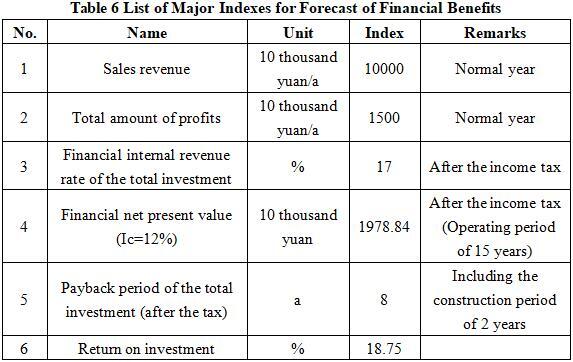
Note: “10 thousand yuan” in the table is in RMB.
1.4.2 Social evaluation
After the completion of the project, it will further enrich Jilin’s tourism products and continuously enhance the market competitiveness of Jilin’s tourism. At the same time, it can promote the integration of culture and tourism in Jilin City, leverage the advantages of tourism and the cultural industry, adjust and optimize the service industry structure, and promote the transformation of the economic mode.
1.5 Cooperative way
Joint venture, cooperation, sole proprietorship, and other methods can be discussed face-to-face.
1.6 What to be invested by the foreign party
Funds, and other methods can be discussed face-to-face.
1.7 Construction site of the project
Chuanying District, Jilin City
1.8 Progress of the project
It is currently seeking external investment.
2. Introduction to the Partner
2.1 Basic information
Name: Bureau of Commerce of Chuanying District, Jilin City
Address: 87 Songjiang Central Road, Jilin City
2.2 Overview
Jilin City is the second largest city in Jilin Province and the only city in China with the same name as the province. The total area is 27711.4 square kilometers, accounting for 14.8% of the province, of which the urban area is 3774.6 square kilometers. It currently governs one county in Yongji County, four county-level cities in Shulan City, Panshi City, Jiaohe City, and Huadian City, four urban areas in Chuanying District, Changyi District, Longtan District, and Fengman District, one national new and high-tech industrial development zone, one national economic and technological development zone, one provincial-level sports tourism economic development zone (high-quality development pilot zone for ice and snow economy), and one international cooperation zone (Jilin China-Singapore Food Zone). The registered residence population is 3.996 million, including more than 40 ethnic groups such as Han, Manchu, Korean, Hui and Mongolian.
Chuanying District is located in the central and western part of Jilin City, named after the shipyard and naval camp established here during the Ming and Qing dynasties. When Jilin City was officially established on April 1, 1936, the name Chuanying District was first used. It is the birthplace of Jilin City and the site of the ancient city. The former eight old city gates are all located in the district. The jurisdiction covers an area of 612.64 square kilometers, including a built-up area of 41 square kilometers. It governs one provincial-level economic development zone (Chuanying Economic Development Zone), 11 streets, 53 communities, 4 townships, and 59 administrative villages, with a total population of 444000, including the rural population of 94000.
Chuanying District is the political, cultural, educational, and financial center of the city. It is the location of the Municipal Party Committee, Municipal Government, Municipal Political Consultative Conference, and Municipal Commission for Discipline Inspection. The tertiary industry is the leading industry in the shipbuilding area, accounting for about 80% of GDP. Wholesale and retail trade, as well as the catering industry, are the main industries of the tertiary industry. At present, there are over 2000 commercial enterprises and more than 20000 individual industrial and commercial households in the entire district, including 79 commercial enterprises above designated size and 10 professional markets. There are over 570 industrial enterprises in the entire district, including 39 large-scale industrial enterprises, mainly distributed in industries such as mechanical processing, wood product processing, food, and power electronics. Agriculture belongs to suburban agriculture, mainly focusing on the cultivation of grain, vegetables, fruits, and economic crops. The total grain output has remained at the level of 125000 tons for several consecutive years; Animal husbandry is mainly based on pig, cattle, and chicken farming, accounting for about half of the agricultural output value.
2.3 Contact method
Postal code: 132000
Contact person: Jia Zijian
Tel: +86-432-64831175
Contact method of the city (prefecture) where the project is located:
Contact unit: Investment Promotion Service Center of Jilin Cooperation and Exchange Office
Contact person: Wang Yanchao
Tel: +86-15843218881


